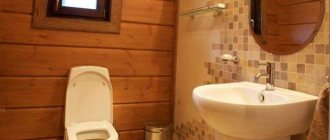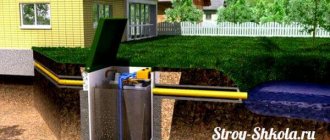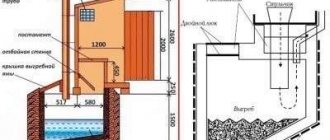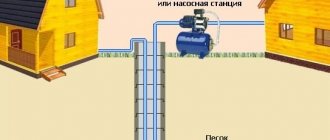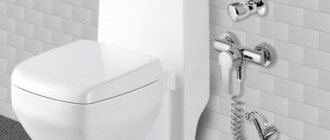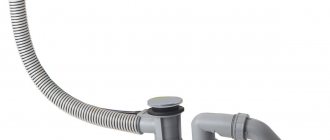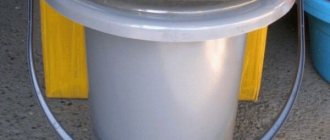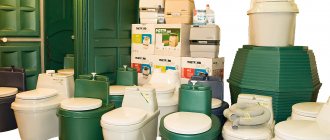mark_kr
8623 0 0
mark_kr August 2, 2016Specialization: professional in the field of construction and repair (full cycle of finishing work, both internal and external, from sewerage to electrical and finishing work), installation of window structures. Hobbies: see the column “SPECIALIZATION AND SKILLS”
This system does not require a septic tank or water supply to operate.
Finnish peat toilets for summer cottages are the most popular type of dry closets. To dispose of waste, they use a dry substance: either peat, or a mixture of peat and sawdust, or another composition based on bulk raw materials with good hygroscopicity.
In any case, installing such a device allows you to solve the problem of sanitation where it is not possible to equip a separate bathroom with a connection to a sewer or septic tank. In the article below I will talk about my experience using such toilets, analyze the most popular brands on the market, and also give some tips on choosing a ready-made model for making the product yourself.
Types of dry closets
A peat toilet for a summer residence is not the only type of biological structure, so it is advisable to consider all existing options to enable a comprehensive comparative assessment.
Chemical models
In chemical dry toilets, the receiving tank is filled with a special composition that prevents the occurrence of putrefactive processes and blocks the growth of bacteria in the waste. Such substances are available in the form of liquids or granules. The liquid works more efficiently due to more complete mixing of the composition with waste products.
The advantages of chemical liquid toilets are:
- compact size,
- light weight,
- autonomous operation (no need to connect the unit to power supply or engineering systems),
- environmental safety provided that modern products with live bacteria are used.
Liquid dry toilet
Electric dry toilets
The operation of an electric toilet is fundamentally different from the functioning of its analogues. Models of this type are equipped with compressors and fans, with the help of which solid waste is dried. To remove the liquid component of waste, some models provide a drainage outlet. There are also electric toilets, the principle of which is based on freezing waste.
Electric dry closets have not yet become widespread in Russia, but the practice of their use has shown the high efficiency of the technology. The disadvantage of this option is the need to connect the unit to the electrical network and install a ventilation vent for models with evaporators. In addition, their price is quite high - from 30,000 rubles and above.
Peat structures
The effectiveness of this type of toilet is ensured by the ability of peat, due to the bacteria it contains, to form compost, an environmentally friendly fertilizer, when interacting with human waste.
Review
I also use Piteko 505. I’ve adapted to spreading peat: I turn it smoothly in one direction or the other, and it falls asleep decently. The nuts have not yet been loosened, apparently the assembler was caught by a normal person and did not tighten the nuts. The container is also not very easy to remove, despite the cut in the lower pipe, but I have adapted: I don’t load more than half of the container, so it’s easier to get it out. Well, on the other hand, the managers offered me to buy the completely problem-free Biolet Multoa, but its price is such that I decided that for my change house Piteko 505 is an ideal option , even if sometimes I throw in peat with a scoop, the main thing is that there are no flies and no smell!
Operating principle and design features of peat toilets
You can make country peat toilets with your own hands. If performing such work seems difficult for you, you should take a closer look at ready-made factory-produced models. A distinctive feature of compost structures is the method of loading neutralizing material. Unlike chemical units, peat toilet models are not filled with active material at a time until it is used up. Each layer of waste is covered with peat, which ensures the most complete contact, fast and effective compost formation.
Pouring peat into a special container for a composting toilet before use
Filling the layer can be done manually. This method is usually used when installing homemade waste disposal units. A container with dry peat and a scoop is placed next to the structure. Backfilling is performed every time you visit the toilet.
Factory peat toilets are usually equipped with dispensers. In them, peat is placed in special containers, and the dispenser ensures economical consumption of the mixture. The most advanced models are equipped with dispensers with distributors, thanks to which peat is evenly distributed over the surface of the waste layer in the storage tank.
Installation of a peat dry closet using the example of the BioComfort Plus model
Composting peat toilets can be single or double chambered.
- The first option is typical for homemade recyclers.
- The second is produced in a factory, and the chambers allow the separation of solid and liquid fractions of waste.
An important nuance in the operation of peat dry toilets is the need for oxygen to effectively convert waste into compost. This problem is not so relevant for portable compact units. In stationary waste disposal units with a large reservoir capacity, aerator pipes can be installed to ventilate the layer in the storage tank.
To prevent the appearance of unpleasant odors, the peat dry closet for the dacha is equipped with ventilation.
- If the tank volume is small, the ventilation outlet is simply removed from the outdoor “birdhouse” or other room.
- When installing aeration pipes, they are connected to the ventilation duct.
Installation diagram of a country dry toilet
Review
“I’ve had
Separett Villa for 3 years now, in the summer it’s generally great, no smell, no problems - 1 but you have to make sure that the liquid
fraction drainage pipe doesn’t get clogged, otherwise there will be a serious accident - the place where the bucket is installed will flood and that’s it, scooping it out is an awesome pleasure — I checked it the hard way (the pit on the street clogged due to a design error), after that there were no accidents! It works great in winter, nothing freezes in the pit , everything is great! There is no noise or smell at all (the smell appears in the summer near the house during the wind due to the side outlet of the ventilation pipe under the roof - this year I will raise the pipe higher! I use garbage bags and then throw the contents into the trash can (everything is relatively dry there and does not smell almost nothing), the garbage really stinks stronger =) When the power is turned off. I don’t bother with energy - I open the toilet and put the lid on the tank from the kit and that’s it =) There will be a battery this year. In short, as happy as an elephant. "
Advantages and disadvantages of peat toilets
When determining which peat toilet for a dacha is better, the features of the products, their advantages and disadvantages are taken into account.
The advantages of using a dry closet with peat are:
- small size,
- possibility of autonomous operation without connection to the power grid or utilities,
- environmental friendliness,
- obtaining high-quality organic fertilizer from waste.
Disadvantages of peat models:
- the need to monitor the level in the storage tank,
- the need to periodically empty the tanks.
But here it should be noted that these disadvantages are relevant for all types of dry closets.
Recommended peat filling levels for a composting toilet
Popular factory models
The low cost of peat toilets allows you to save time and effort by purchasing a ready-made model. It is important not only to take into account their features when comparing, but also to give preference only to proven brands. This will avoid unpleasant surprises during operation. If you are buying a peat dry closet for your dacha, the features and technical specifications will tell you how to choose a model.
Ecomatic dry toilets
Ecomatic is a Finnish peat toilet. Such models are designed to use not pure peat, but a mixture of dry peat with sawdust, which ensures the presence of oxygen necessary for the formation of compost due to its presence between the particles.
Reviews of the Finnish peat toilet for the Ekomatic dacha show that on the Russian market potential buyers consider the cost of the products to be too high. The aesthetic appeal of models, according to statistics, is considered a secondary advantage. An important advantage of the brand’s products is the large tank capacity compared to domestic analogues - 110 liters versus 60. Russian composting toilets can be more capacious than 60 liters, but they are all inferior in this regard to Ekomatik. The capacity of its tank ensures comfortable use of the device by a family of 4 people for two months.
Prices for such a peat dry toilet for a summer residence vary depending on the volume and location of production. For example, the Ecomatic model, with a volume of 110 liters and produced in Finland, costs 21,900 rubles, and an option with the same parameters made in Russia using Finnish technologies (Torfolet) will cost 16,900 rubles.
Piteco
Piteko is another brand of peat toilets that are produced in Russia. Just like Ekomatic brand models, such structures are installed on a hard and level surface without connection to the electrical network and utilities. Distinctive features of Piteko composting toilets are the ability to separate waste into fractions (liquid and solid components), install filters on liquid outlets, and have doors for convenient unloading of compost.
The Piteco 505 model (storage capacity is 44 liters) costs 5,490 rubles.
Biolan
Quite expensive but effective Finnish peat toilets Biolan have a two-chamber design in which liquid and solid waste are collected in different tanks. When installed, the Biolan dry closet does not require connection to the electrical network or sewer system.
The models are equipped with a ventilation pipe with a lid, which eliminates the appearance of unpleasant odors and flies attracted to them in the room. Toilets of this brand are equipped with an improved drainage system.
The range of these dry toilets includes several options, with a maximum capacity of 300 liters. Price - from 19,500 rubles.
Review
“I bought the same one over the weekend ( Piteco 506). I received a modification with a different handle for the peat spreader - as in Fig. in the passport (see photo). I don’t know if this is worse or better - I suspect that ’ll still have to throw the peat with a scoop . The plastic of the body and container seems a little flimsy. Ventilation pipes are included, you will have to come up with a replacement. So far the only thing that comes to mind is to buy a 75mm sewer pipe. Maybe there are some other options? Although the first elbow will have to be left if the internal container cannot be pulled out without moving it, as SergeyAS writes.”
Features of choosing peat dry closets
Choosing a composting dry closet is essentially a two-step process.
First of all, the technical parameters of the model necessary for comfort of use are determined.
- The overall overall dimensions of the structure must correspond to the size of the room in which the peat dry closet will be installed.
- The required tank capacity is not so easy to determine. On the one hand, a large volume will allow you to increase the periods between compost unloadings, even when using the recycler with a large family. On the other hand, depending on the characteristics of the model and the type of backfill used, there are restrictions on the time during which the mixture of waste and peat can remain in the tank. Without timely cleaning, the quality of the compost will be reduced and an unpleasant odor may appear. It is optimal if the tank is filled before the set period expires.
When choosing a peat toilet, pay attention to the features of its design.
- A level indicator will save you from unnecessary hassle and the need to periodically check the condition of the tank.
- The dispenser promotes economical consumption of peat.
- The dispenser-distributor increases the efficiency of the model.
Finnish dry toilet Termotoilet with a heat-insulated body is suitable for a large family
Composition selection
- Some composting toilets use ash, sawdust and other compounds as backfill, but they are much less effective due to the lack of special bacteria that process waste.
- Peat supplies the necessary microorganisms, therefore it is considered the most effective consumable material for toilets of this type.
- A mixture of peat and sawdust, which ensures aeration of the composition, is made in a 1:1 ratio.
If you are planning to buy a heated washbasin for your garden, then you may be interested in our article describing the various models.
Read about the nuances of connecting a pumping station to a well with your own hands in another article.
And instructions for building a composting peat toilet yourself can be found here.
Emptying
In order for the Kekkila brand peat dry closet, which has a storage capacity of 50 liters, to function properly, it must be emptied in a timely manner.
Components of the Ecomatic dry closet
- The container is rinsed with water and placed in an open place for a while to dry.
- To prevent any remaining liquid from contaminating the floor and clothing, it is advisable to immediately place the container in a large bag after removal, using, for example, a plastic garbage bag.
- The contents of the container are sprinkled evenly with a two to three centimeter layer of peat mixture on top.
- The cover is removed.
- Carefully remove the inner container.
- All that remains is to take the container from the dry closet to the place in the garden chosen for collecting compost and empty its contents.
- Drainage holes are checked. If they are clogged, then cleaning is carried out.
All that remains is to put the clean container back inside the body of the dry closet and install the lid. When using waste as organic matter to improve soil fertility, it is necessary to keep it in a compost pit for at least two years. At the same time, leaves, weeds, and used mulch are poured into it to obtain complete fertilizer. It is more convenient to clean the dry closet early in the morning, when it has not yet been used. In this case, there will be less liquid in the container.
